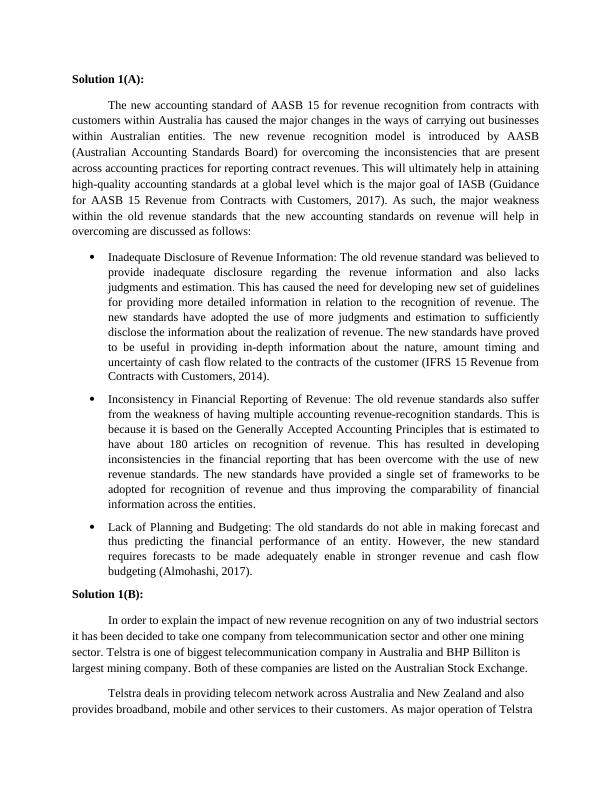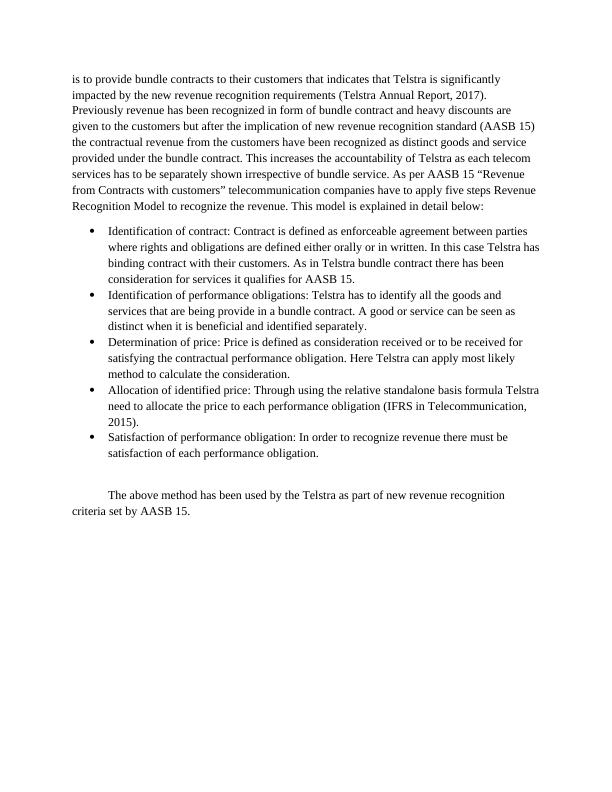Impact of AASB 15 on Revenue Recognition in Telecommunication and Mining Sectors
This assignment is about revenue recognition and accounting for income tax. Students are required to critically analyze and synthesize information gathered from different sources, discuss the weaknesses of old accounting standards, and explain how the new standard overcomes these weaknesses. They also need to analyze the impact of the new accounting standard on revenue recognition disclosure in annual reports from different industries.
Added on 2023-06-11
About This Document
Impact of AASB 15 on Revenue Recognition in Telecommunication and Mining Sectors
This assignment is about revenue recognition and accounting for income tax. Students are required to critically analyze and synthesize information gathered from different sources, discuss the weaknesses of old accounting standards, and explain how the new standard overcomes these weaknesses. They also need to analyze the impact of the new accounting standard on revenue recognition disclosure in annual reports from different industries.
Added on 2023-06-11
End of preview
Want to access all the pages? Upload your documents or become a member.


